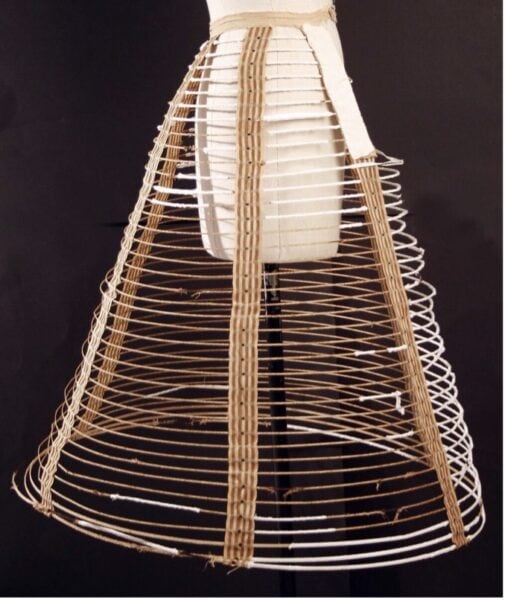This resource was developed as part of the AHA’s Teaching Things project.
Activity
The sources in this activity combine an object, a visual image, and an oral history interview. The cage crinoline was worn underneath a dress and was popular in the United States from the mid-1850s into the 1880s. It replaced earlier, heavier forms of underskirts. The cage crinoline was made from a set of hoops, often made of steel, whalebone, or other materials that would hold the shape. The hoops were attached by cloth strips. Cage crinolines were much lighter than earlier crinolines and allowed the circumference of women’s skirts to become larger because the stiff hoops could hold the weight of the fabric up and out.
- Examine the photograph of the cage crinoline at the Metropolitan Museum of Art. Imagine what it would be like to wear this undergarment. How would it affect your daily activities?
- Describe the scene and the story being told in the cartoon from Frank Leslie’s Illustrated Newspaper. Keeping in mind that cartoons are humor, and that humor often exaggerates, how can you relate this portrayal of the cage crinoline to the concept of “separate spheres” for women during this historic period?
- Rivana Boynton was interviewed during a large project funded by the federal government in the 1930s. She was one of more than two thousand people interviewed who were born enslaved. They were asked by interviewers to recall their lives during enslavement. The excerpt in this assignment is Boynton’s response to the interviewer’s specific question, “Do you remember when women wore hoops in their skirts and when they stopped wearing them and wore narrow skirts?”
Why might an interviewer ask this question of a formerly enslaved woman? What does Boynton’s answer reveal? How does Boynton’s ownership of a cage crinoline during the period of her life when she was enslaved relate to the concept of “separate spheres” and racism?


Related Resources
Sorry, we couldn't find any resources. Please try a different search.